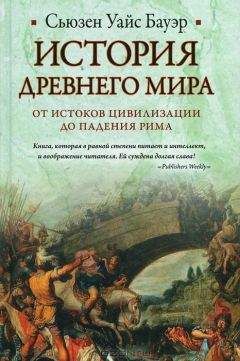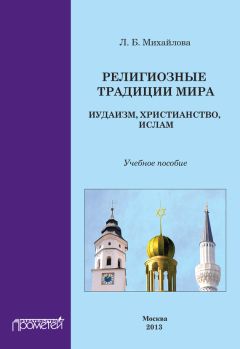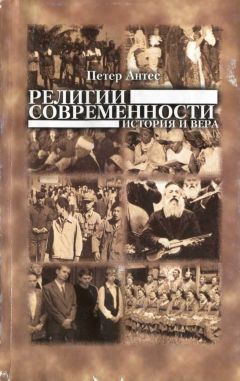Сьюзен Бауэр - История Древнего мира. От истоков Цивилизации до падения Рима
2. Quoted in W. V. Davies, Egyptian Hieroglyphs: Reading the Past (1987), p. 47.
ГЛАВА ВОСЬМАЯ. ПЕРВЫЕ ВОЕННЫЕ ХРОНИКИ
1. «Enmerkar and the Lord of Aratta», translated by J. A. Black, et al., in The Electronic Text Corpus of Sumerian Literature at http://www.etcsl.orient.ox.ac.uk/ (1998—); hereafter abbreviated as ETC.
2. Translated by Sandars, p. 61.
3. Sandars, p. 71. Я очень обязана Н. К. Сандарс, обеспечившей дополнительные краски для моего повествования вводным эссе к своим переводам, где она анализирует различные исторические варианты, могущие лежать в основе описания северного путешествия Гильгамеша.
4. Версию списка, на которой я основываюсь, см.: Kramer, The Sumerians, pp. 78–80. Доктор Крамер также сравнивает этот документ с «Царским списком», чтобы показать ход конфликта между двумя городами.
5. «Gilgamesh and Agga of Kish», in ETC.
ГЛАВА ДЕВЯТАЯ. ПЕРВАЯ ГРАЖДАНСКАЯ ВОЙНА
1. Herodotus, The Histories, translated by Robin Waterfield (1998), 2.99.
2. Ian Shaw, ed., The Oxford History of Ancient Egypt (2002), pp. 68–69.
3. Rudolf Anthes, «Egyptian Theology in the Third Millennium B.C.», Journal of Near Eastern Studies 18:3 (1959), p. 171.
4. Ibid.
5. Ian Cunnison, The Luapula Peoples of Northern Rhodesia (1959), p. 98.
6. Edmund Leach, «The Mother’s Brother in Ancient Egypt», RAIN [Royal Anthropological Institute of Great Britain and Ireland] 15 (1976), p. 20.
7. Shaw, p. 9.
8. William Flinders Petrie, Researches in Sinai (1906), p. 41.
9. Rice, p. 14.
10. Peter A. Clayton, Chronicle of the Pharaohs: The Reignby-Reign Record of the Rulers and Dynasties of Ancient Egypt (1994), p. 28.
ГЛАВА ДЕСЯТАЯ. ПЕРВЫЙ ЭПИЧЕСКИЙ ГЕРОЙ
1. Dalley, p. 42 ff.
2. Сам «Эпос о Гильгамеше» так или иначе являются источником. Я основывалась на его структуре, данной в переводе Н. К. Сандарс, но слегка сократила цитируемый текст, убрала из него наиболее трудные слова и частично изменила его на основании поправок от следующих лиц: Сэмюэль Крамер, Морин Гэллери Ковакс и Стефани Дэлли.
3. Практически полностью взято из перевода Сандарс: pp. 118–119.
ГЛАВА ОДИННАДЦАТАЯ. ПЕРВАЯ ПОБЕДА НАД СМЕРТЬЮ
1. Clayton, p. 33.
2. Richard L. Zettler and Lee Home, Treasures from the Royal Tombs of Ur (1998), p. 29.
3. This is J. M. Roberts’s suggestion in The Penguin History of the World (1997), p. 71.
4. Herodotus, 2.12.
5. Paul Jordan, Riddles of the Sphinx (1998), p. 73.
6. Clayton, p. 45.
7. Herodotus, 2.124.
8. Herodotus 2.126.
9. Bruce G. Trigger, «Monumental Architecture: A Thermodynamic Explanation of Symbolic Behavior», World Archaeology 22:2 (1990), p. 119.
10. Dean Hardy and Marjorie Killick, Pyramid Energy: The Philosophy of God, the Science of Man (1994), p. 169.
11. Peter Tompkins, Secrets of the Great Pyramid (1971), p. xiv.
12. James and Thorpe, p. 208.
ГЛАВА ДВЕНАДЦАТАЯ. ПЕРВЫЙ РЕФОРМАТОР
1. Translated by Samuel Kramer, The Sumerians, p. 51.
2. Ibid., p. 313.
3. John Winthrop Hackett, ed., Warfare in the Ancient World (1989), p. 4.
4. Leick, Mesopotamia, p. 149.
5. I. M. Diakonoff, ed., Early Antiquity (1991), p. 82.
6. Translated by Samuel Kramer, From the Tablets of Sumer (1956), p. 48.
7. Diakonoff, p. 82.
8. J. S. Cooper, Sumerian and Akkadian Royal Inscriptions, vol. 1, Presargonic Inscriptions (1986), p. 78.
9. Nels Bailkey, «Early Mesopotamian Constitutional Development», American Historical Review 72:4 (1967), p. 1222.
10. Translated by Kramer, The Sumerians, pp. 323–324.
11. Leick, Mesopotamia, p. 150.
12. Translated by Kramer, The Sumerians, pp. 322–323.
13. Cooper, p. 95.
14. Crawford, p. 25.
ГЛАВА ТРИНАДЦАТАЯ. ПЕРВЫЙ ВОЕННЫЙ ДИКТАТОР
1. Пересказ, основанный на переводе, представленном в: James B. Pritchard, ed., in The Ancient Near East: An Anthology of Texts and Pictures (1958), pp. 85–86, с очисткой для лучшего понимания от некоторых терминов, предложенной в: Gwendolyn Leick in Mesopotamia, p. 94.
2. J. M. Roberts, p. 51.
3. Translated by Kramer, The Sumerians, p. 330.
4. Xenophon, The Education of Cyrus, translated by Wayne Ambler (2001), 1.3.8–9.
5. «The Sargon Legend, Segment B», in ETC.
6. Translated by Kramer, The Sumerians, p. 324.
7. Diakonoff, p. 85.
8. Ibid.
9. Translated by Kramer, The Sumerians, p. 324.
10. H. W. F. Saggs, The Might That Was Assyria (1984), p. 19.
11. Adapted from Benjamin R. Foster, Before the Muses: An Anthology of Akkadian Literature, vol. 1 (1996), p. 254.
12. Michael Roaf, Cultural Atlas of Mesopotamia and the Ancient Near East (1996), p. 97.
13. A. Leo Oppenheim, Ancient Mesopotamia: Portrait of a Dead Civilization (1977), p. 154.
14. Diakonoff, p. 86.
15. Bailkey, p. 1225. Примечания Бейкли содержат полную библиографию древних вавилонских надписей, так называемых «Текстов Предзнаменования», содержащих записи о восстании.
16. Leick, Mesopotamia, p. 99.
ГЛАВА ЧЕТЫРНАДЦАТАЯ. ПЕРВЫЕ РАСПЛАНИРОВАННЫЕ ГОРОДА
1. Keay, p. 6.
2. Wolpert, pp. 14–15.
3. Fischer, p. 61.
4. Wolpert, p. 18.
5. Keay, p. 13.
6. Hermann Kulke and Dietmar Rothermund, A History of India (1998), p. 23.
7. Ibid., pp. 22–23.
8. Терминология и размерения взяты из: Kulke and Rothermund, p. 23, and Keay, pp. 8–9.
ГЛАВА ПЯТНАДЦАТАЯ. ПЕРВЫЙ РАСПАД ИМПЕРИИ
1. Herodotus, 2.127–128.
2. Jordan, p. 80.
3. Ibid., p. XVII.
4. Herodotus, 2.129.
5. Herodotus, 2.133.
6. Herodotus, 2.131.
7. Clayton, p. 60.
8. A. Rosalie David, The Egyptian Kingdoms (1988), p. 16.
9. Абзац 217 дан в переводе из: J. H. Breasted in Development of Religion and Thought in Ancient Egypt (University of Chicago Press, 1912); далее абзац 309 взят в переводе: R. O. Faulkner in The Ancient Pyramid Texts (Clarendon Press, 1969); оба процитированы: Jon E. Lewis, ed., Ancient Egypt (2003), pp. 27–29.
10. Clayton, p. 64.
11. Quoted in Clayton, p. 67.
12. Colin McEvedy, The New Penguin Atlas of Ancient History (2002), p. 36.
ГЛАВА ШЕСТНАДЦАТАЯ. ПЕРВЫЕ ВТОРЖЕНИЯ ВАРВАРОВ
1. Kramer, The Sumerians, p. 61.
2. Roaf, p. 98.
3. Впервые отмечено: Hugo Radau, Early Babylonian History Down to the End of the Fourth Dynasty of Ur (1899), p. 307.
4. David Willis McCullough, ed., Chronicles of the Barbarians (1998), p. 8.
5. Oppenheim, Ancient Mesopotamia, p. 62.
6. «The Cursing of Agade», in ETC.
7. Ibid.
8. Kramer, The Sumerians, p. 330.
9. «A tigi to Bau for Gudea», in ETC.
10. «The Victory of Utu-hegal», in ETC.
11. Kramer, The Sumerians, p. 325.
12. «Ur-Namma the canal-digger», in ETC.
13. «A praise poem of Ur-Namma» in ETC.
ГЛАВА СЕМНАДЦАТАЯ. ПЕРВЫЙ ПРИВЕРЖЕНЕЦ МОНОТЕИЗМА
1. Gen. 10:11–24.
2. Victor P. Hamilton, The Book of Genesis: Chapters 1–17 (1990), p. 363.
3. Adapted from «The death of Ur-Namma (Ur-Namma A)», in ETC.
4. Jonathan N. Tubb, Canaanites: Peoples of the Past (1998), p. 15.
5. J. M. Roberts, p. 41.
6. Tubb, p. 39.
7. Donald B. Redford Egypt, Canaan, and Israel in Ancient Times (1992), pp. 63–64.
8. Aidan Dodson and Dyan Hilton, The Complete Royal Families of Ancient Egypt (2004), p. 80.
9. Quoted in Redford, Egypt, pp. 67–68.
10. Qur’an 2.144–150.
11. Roaf, p. 101.
12. Quoted in Leick, Mesopotamia, pp. 132–133.
13. Leick, Mesopotamia, p. 126.
14. Roaf, p. 102.
15. Tubb, p. 38.
ГЛАВА ВОСЕМНАДЦАТАЯ. ПЕРВОЕ НЕСЧАСТЬЕ В СРЕДЕ ОБИТАНИЯ
1. John Perlin, Forest Journey: The Role of Wood in the Development of Civilization (1991), p. 43.
2. Thorkild Jacobsen, Salinity and Irrigation Agriculture in Antiquity (1982), p. 468.
3. D. Bruce Dickson, «Circumscription by Anthropogenic Environmental Destruction: An Expansion of Carneiro’s (1970) Theory of the Origin of the State», American Antiquity 52:4 (1987), p. 713.
4. Kramer, The Sumerians, pp. 333–334, adapted.
5. Ibid., pp. 334–335, adapted.
6. Несколько адаптировано из: «The Lament for Urim», in ETC.
7. Ibid.
ГЛАВА ДЕВЯТНАДЦАТАЯ. БИТВА ЗА ОБЪЕДИНЕНИЕ
1. Verbrugghe and Wickersham, p. 137.
2. Stephan Seidlmayer, «The First Intermediate Period», in The Oxford History of Ancient Egypt, ed. Ian Shaw (2002), pp. 128–129.
3. Verbrugghe and Wickersham, p. 194.
4. Clayton, p. 72.
5. «Instructions for Merikare», in Miriam Lichtheim, Ancient Egyptian Literature, vol. 1 (1975), p. 70.
6. Shaw, p. 161.
7. Ibid., p. 151.
8. Dodson and Hilton, p. 87.
9. Ibid., p. 90.
10. «The Prophecy of Nerferti», quoted in Shaw, p. 158.
11. Clayton, p. 79.
12. Shaw, p. 160.
13. Silverman, p. 79.
ГЛАВА ДВАДЦАТАЯ. МЕСОПОТАМСКИЙ КОТЕЛ
1. Reconstruction of «Ishbi-Erra and Kindattu», segments A, B, D, and E in ETC.
2. Roaf, p. no.
3. Saggs, Assyria, pp. 28–30.
4. Reconstructed from the somewhat fragmented «Letter from Nann-ki-ag to Lipit-Estar about Gungunum’s troops» and «Letter from Lipit-Estar to Nann-ki-ag about driving away the enemy», both in ETC.
5. «An adab to Nanna for Gungunum (Gungunum A)», in ETC.
6. L. W. King, The Letters and Inscriptions of Hammurabi, vol. 3 (1976), p. 213, translation of «Reign of Sumuabu».
7. Translated by A. K. Grayson, Assyrian and Babylonian Chronicles (1975), p. 155.
8. Assyrian king list quoted in Saggs, Assyria, p. 25.
9. Daniel David Luckenbill, Ancient Records of Assyria and Babylon, Volume I: Historical Records of Assyria from the Earliest Times to Sargon (1926), p. 16.
10. Saggs, Assyria, p. 37. n. Roaf, p. 116.
12. Saggs, Assyria, p. 25.
13. Gwendolyn Leick, The Babylonians: An Introduction (2003), p. 33.
14. Oppenheim, Ancient Mesopotamia, p. 156.
15. H. W. F. Saggs, Babylonians (1995), p. 98.
ГЛАВА ДВАДЦАТЬ ПЕРВАЯ. ПАДЕНИЕ СЯ
1. Ssuma Ch’ien, The Grand Scribe’s Records, vol. 1, ed. William H. Nienhauser, Jr., translated by Tsai-fa Cheng et al. (1994), p. 21.
2. Ibid., p. 22.
3. Ibid., p. 32.
4. John King Fairbank and Merle Goldman, China: A New History (2002), p. 37.
5. Li Liu and Xingcan Chen, State Formation in Early China (2003), p. 35.
6. Ibid., p. 35.
7. Ch’ien, p. 37.
8. Ibid., p. 38.
9. J. A. G. Roberts, p. 5.
10. Ch’ien, p. 38; the exact quote is «I regret failing to kill T’ang in Hsia-t’ai; that is what has brought me to this».
ГЛАВА ДВАДЦАТЬ ВТОРАЯ. ИМПЕРИЯ ХАММУРАПИ
1. Jorgen Laessoe, People of Ancient Assyria: Their Inscriptions and Correspondence (1963), p. 47.
2. Перефразировано для лучшего понимания из: Laessoe, p. 50.
3. Laessoe, pp. 68–69.
4. Ibid., p. 76.
5. Ibid., p. 78.
6. Реконструкция Андре Парро из надписей Мари, приведено в: Jack M. Sasson, «The King and I: A Mari King in Changing Perceptions», Journal of the American Oriental Society 118:4 (1998), p. 454.
7. King, vol. 2, p. 176.




